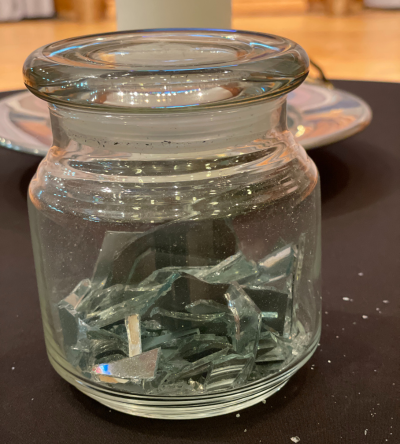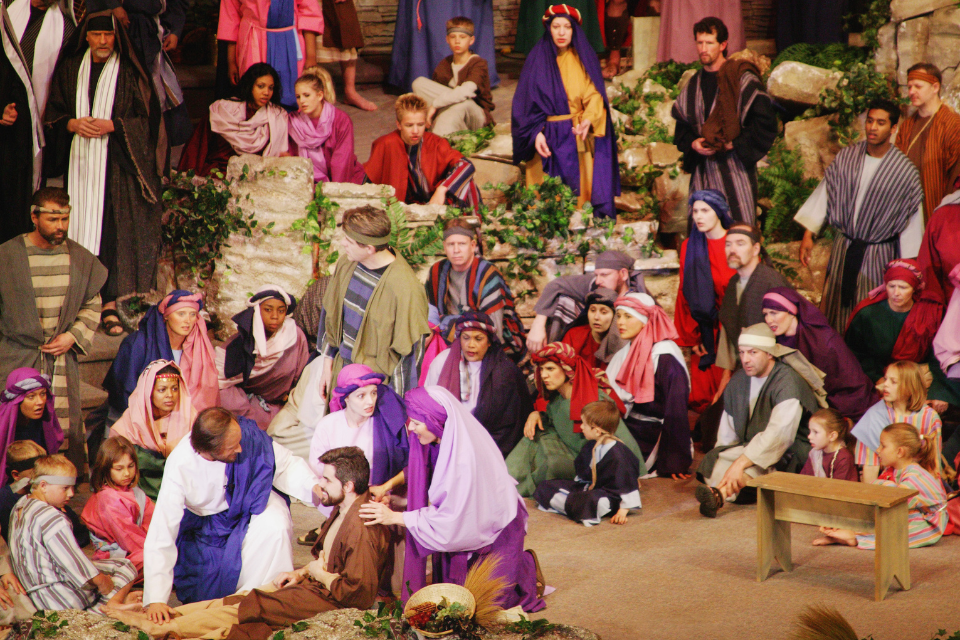Throughout Lent, campus ministry leaders will provide devotions based on the Gospel lectionary scriptures. Jeff Williams, Chair of the Division of Higher Education and Campus Ministry, looks to the example of Jesus and others who faithfully pursued transparent living and public teaching.
JEFF WILLIAMS
Chair, Division of Higher Education and Campus Ministry
“Inside, the high priest began asking Jesus about his followers and what he had been teaching them. Jesus replied, ‘Everyone knows what I teach. I have preached regularly in the synagogues and the Temple, where the people gather. I have not spoken in secret’” (John 18:19-20, NLT).
Thank you, Michigan Conference, for the opportunity to share these Lenten devotions from campus ministry perspectives. Your long-standing support of campus ministry makes many things possible where the people gather.
 Jesus was a public educator. His transparent life and public teaching confronted and revealed the sins of the world, which led to his death. The excruciating drama of Holy Week leads us step-by-step through his arrest, trial, and crucifixion. I am moved to tears every year that we go through these stories.
Jesus was a public educator. His transparent life and public teaching confronted and revealed the sins of the world, which led to his death. The excruciating drama of Holy Week leads us step-by-step through his arrest, trial, and crucifixion. I am moved to tears every year that we go through these stories.
The late-in-Holy-Week stories can be devastating if we encounter them in isolation or secret. We cannot bear the agony of them alone. The good news on Good Friday is that we were never intended to do so. These stories are public and held by communities of faith, where the people gather. Our communal study, recital, and remembrance of them express faith in God as so much continues to be destroyed in our world and in our lives.
Holding the grief and trauma of late-in-Holy-Week stories, we can discover their saving grace. That’s the image of the broken mirror in the glass jar, a friend’s gift when Beverly and I left campus ministry at Wesley of Kalamazoo in 2002. The jar allows us to see the jagged edges and process our grief. It also is a helpful image for the growth and struggle of the educational process.
I am deeply grateful for and profoundly biased in favor of campus ministry. Our campus pastors, students, and local Board members are examples of the faithful pursuit of transparent living and public teaching in Jesus’ name where the people gather. We are present in our culture’s most concentrated populations of young adults.
On a wider scale are these two examples of the power of faithful, prophetic higher education communities.
Rev. Dr. Chris Momany’s book For Each and All: The Moral Witness of Asa Mahan details the life of the founding president of Adrian College. Rev. Dr. John E. Harnish, in his review of this book, writes, “Momany . . . has made the life of Asa Mahan and his commitment to the ‘intrinsic worth’ of all persons a hallmark of his ministry on and off campus. He connects Asa Mahan with the current issues of racism and human trafficking in a way that gives depth to the discussion and a historic anchor for our social witness.”
Another example is Philander Smith College, founded in 1877 and chartered in 1883 as a four-year coeducational liberal arts college in Little Rock, AR. It is a United Methodist-related college like Albion and Adrian.
The heritage of Philander Smith College is deeply rooted in faith. Philander Smith College’s mission statement echoes its first mission by The Methodist Church to provide an education during “conflict and social change,” by educating current students to become “advocates for social justice.”
Terrence Roberts is one of the Little Rock Nine, a group of African-American students who were the first Black students ever to attend Little Rock Central High School in 1957.
Roberts spoke at Philander Smith in 1997 and shared these memories: “During the three-week period as we awaited the outcome of the legal wrangling over states’ rights versus federal rights, Philander Smith College faculty and students tutored us in the high school subjects being taught to our future Central High classmates. . . . They continued to do this for the entire academic year of 1958-59 as well when all Little Rock public high schools were closed in the name of ‘segregation forever,’ and African-American students were in need of educational resources” (full text of speech found in Roberts’ Lessons from Little Rock).
I am inspired by the leading role that belongs to higher education communities and their willingness to pursue transparent living and public teaching.
We study, recite, and remember the late-in-Holy-Week stories for the sake of being witnesses to God’s redeeming love in Jesus Christ.
Last Updated on April 5, 2023

